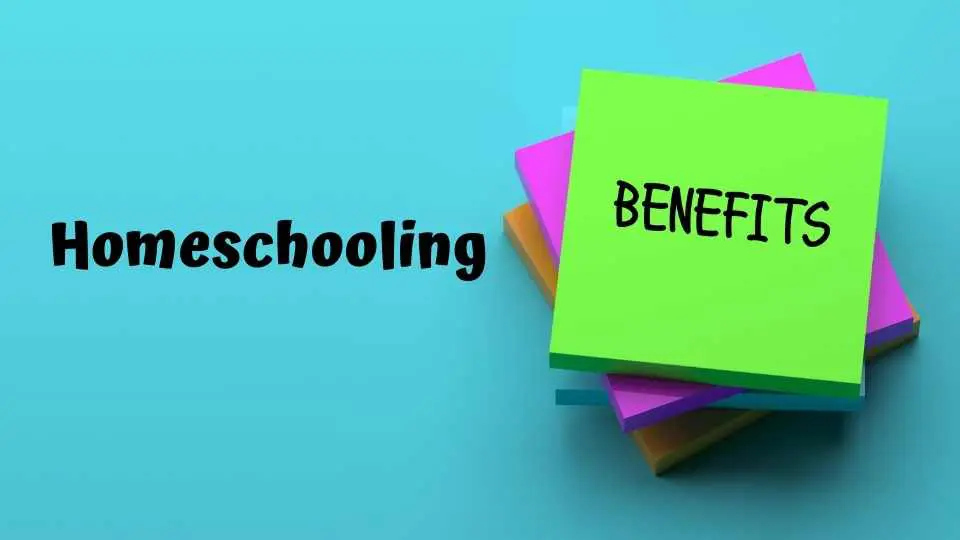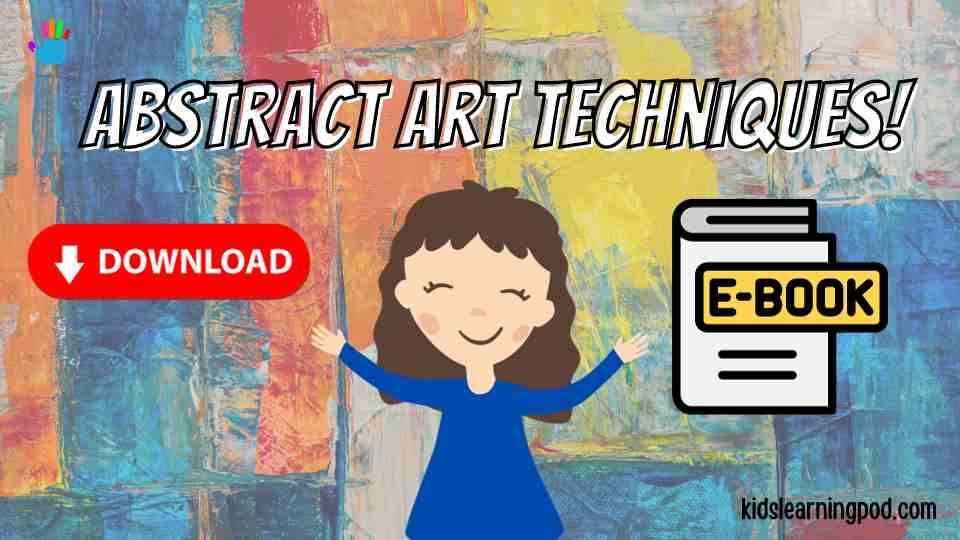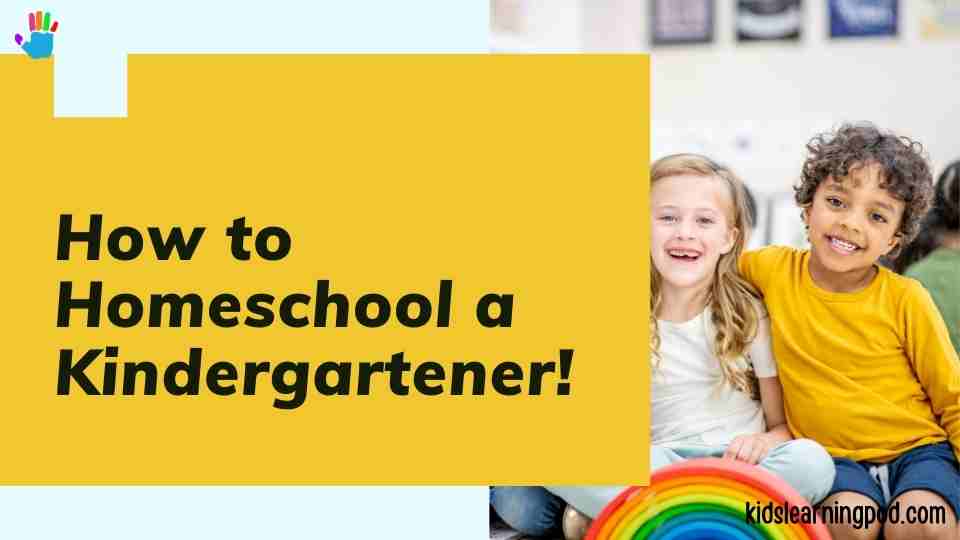
How to Homeschool a Kindergartener is a challenging question. Thankfully here is a complete and comprehensive guide for you to learn in depth. Homeschooling a kindergartener can be a rewarding journey for both parent and child. As you embark on this educational adventure, it’s essential to understand the unique needs of young learners and how to tailor your approach to provide a rich and fulfilling learning experience.
Importance of How to Homeschool a Kindergartener!
Kindergarten lays the foundation for a child’s future academic success. By homeschooling your kindergartener, you have the opportunity to personalize their learning journey, address their individual strengths and weaknesses, and create a nurturing environment where they can thrive.
Homeschooling for kindergarteners holds profound importance in shaping their early educational experiences. It offers a tailored approach that can cater to the unique learning needs and pace of each child. Here’s why homeschooling is vital for kindergarteners:
1. Personalized Learning
Homeschooling allows parents to tailor the curriculum to match their child’s interests, strengths, and learning style. This personalized approach ensures that children receive education in a way that resonates with them, fostering a deeper understanding of concepts.
2. Individualized Attention
In a homeschooling setting, children benefit from one-on-one attention from their parents or educators. This personalized attention enables them to receive immediate feedback, support, and guidance, helping them overcome challenges and excel in their learning journey.
3. Flexibility and Freedom:
Homeschooling offers flexibility in scheduling, allowing families to create a learning routine that fits their lifestyle. This flexibility enables children to learn at their own pace and explore topics of interest in greater depth, fostering a love for learning.
4. Nurturing Environment
Homeschooling provides a nurturing environment where children feel safe, supported, and valued. This nurturing atmosphere fosters confidence, creativity, and independence, laying a strong foundation for their future academic and personal development.
5. Focus on Social and Emotional Development
Homeschooling allows parents to prioritize social and emotional development alongside academic learning. Through meaningful interactions with family members, peers, and community members, children learn essential social skills such as communication, empathy, and cooperation.
6. Tailored Instructional Strategies
Homeschooling empowers parents to employ various instructional strategies tailored to their child’s individual needs. Whether through hands-on activities, experiential learning, or interactive lessons, parents can adapt their teaching methods to maximize their child’s learning potential.
7. Cultivation of Critical Thinking Skills
Homeschooling encourages children to think critically, question, and explore the world around them. By engaging in open-ended discussions, problem-solving activities, and real-world applications, children develop essential critical thinking skills that are vital for success in school and beyond to learn how to homeschool a kindergartener.
8. Seamless Integration of Life Skills
Homeschooling provides opportunities for children to seamlessly integrate life skills into their daily learning experiences. From cooking and gardening to budgeting and time management, homeschooling enables children to develop practical skills that are essential for independent living.
9. Strong Family Bonds
Homeschooling fosters strong bonds between family members as they embark on the educational journey together to know how to homeschool a kindergartener. Through shared experiences, collaborative projects, and meaningful conversations, families develop a deep connection and mutual respect that extends beyond the realm of academics.
10. Holistic Development
Homeschooling prioritizes the holistic development of children, focusing on their intellectual, emotional, social, and physical well-being. By addressing all aspects of child development, homeschooling prepares children to navigate the complexities of the modern world with confidence and resilience.
In essence, homeschooling for kindergarteners offers a wealth of benefits that extend far beyond academic achievement. It provides a nurturing, personalized, and holistic approach to education that lays the groundwork for a lifetime of learning and success.
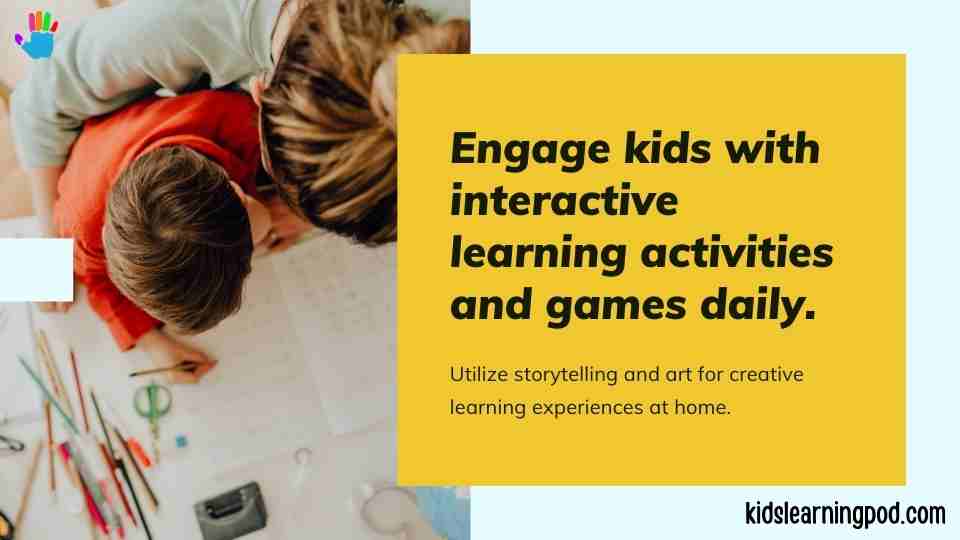
Setting the Stage for Effective Homeschooling
Before diving into the homeschooling journey, it’s essential to set the stage for effective and successful homeschooling. Here are some key steps to consider:
1. Define Your Educational Philosophy
Take the time to reflect on your educational values, beliefs, and goals. Define your educational philosophy, including your approach to teaching and learning, and use it as a guiding framework for your homeschooling journey. Learn about pros and cons as well.
2. Establish Clear Learning Objectives
Identify the learning objectives and goals you wish to achieve with your child. Set clear, achievable goals for each subject area, keeping in mind your child’s interests, strengths, and areas for growth.
3. Create a Flexible Learning Schedule
Design a flexible learning schedule that accommodates your family’s unique needs and lifestyle. Establish a daily routine that includes dedicated time for academic lessons, hands-on activities, and free exploration.
4. Designate a Dedicated Learning Space
Create a designated learning space in your home that is free from distractions and conducive to learning and knowing how to homeschool a kindergartener. Equip the space with educational materials, books, supplies, and resources to support your child’s learning journey.
5. Gather Curriculum and Resources
Research and select curriculum materials and resources that align with your educational philosophy and learning objectives. Choose a mix of textbooks, workbooks, online resources, and hands-on materials to provide a well-rounded education for your child.
6. Embrace a Child-Centered Approach
Prioritize your child’s interests, preferences, and learning style when planning lessons and activities. Embrace a child-centered approach that allows your child to take an active role in their learning and pursue topics that spark their curiosity.
7. Foster a Positive Learning Environment
Create a positive and supportive learning environment that encourages curiosity, exploration, and creativity. Celebrate your child’s achievements, provide constructive feedback, and cultivate a love for learning through engaging and meaningful experiences.
8. Cultivate a Growth Mindset
Encourage a growth mindset in your child by emphasizing the importance of effort, perseverance, and resilience. Encourage them to embrace challenges, learn from mistakes, and view setbacks as opportunities for growth and learning.
9. Build a Support Network
Seek out support from other homeschooling families, online communities, and local resources. Connect with other homeschooling parents for advice, encouragement, and shared experiences, and collaborate on group activities and educational outings.
10. Stay Flexible and Adapt
Remain flexible and adaptable as you navigate the homeschooling journey with your child. Be open to adjusting your approach, trying new strategies, and revisiting your goals and objectives as your child’s needs and interests evolve while you learn more about how to homeschool a kindergartener.
By setting the stage for effective homeschooling, you lay the foundation for a successful and fulfilling educational experience for both you and your child. With careful planning, dedication, and a supportive learning environment, homeschooling can be a rewarding journey that nurtures your child’s growth and development in profound ways.
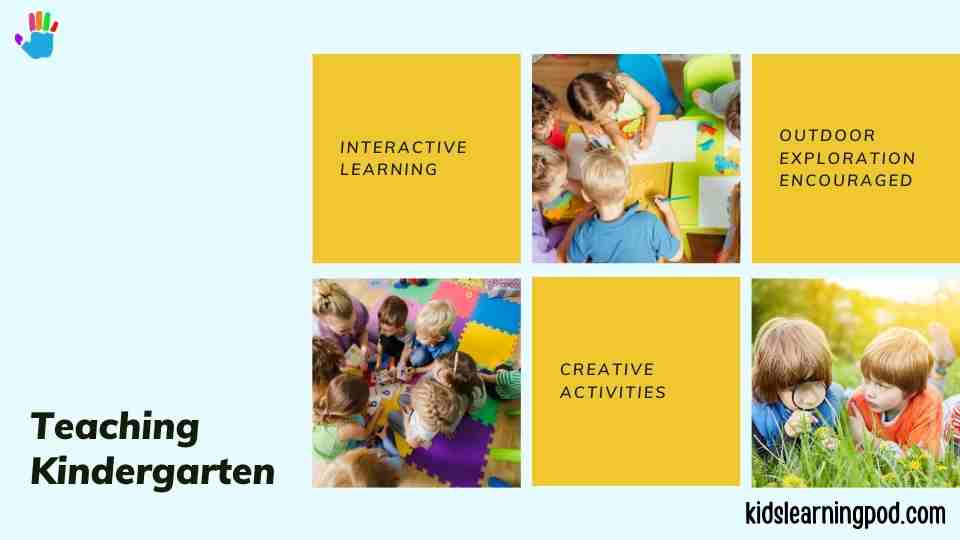
Understanding the Kindergarten Curriculum
Before diving into homeschooling, familiarize yourself with the typical kindergarten curriculum. This includes core subjects such as reading, math, science, and social studies, as well as essential skills like fine motor development, socialization, and problem-solving. Tailor your curriculum to align with your child’s interests and learning style, ensuring they stay engaged and motivated.
Core Subjects and Skills
In homeschooling kindergarteners, focusing on core subjects and essential skills is paramount to laying a strong educational foundation to know how to homeschool a kindergartener. Mathematics introduces young learners to fundamental concepts like counting, number recognition, basic operations, and simple problem-solving. This increases your knowledge about how to homeschool a kindergartener. Through hands-on activities, such as using manipulatives like blocks or toys, children develop a conceptual understanding of mathematical concepts in a fun and engaging way.
Language arts encompasses various components, including reading, writing, listening, and speaking skills. Reading aloud to children promotes language development, vocabulary acquisition, and comprehension skills, while interactive writing activities encourage them to express their thoughts and ideas creatively to model how to homeschool a kindergartener. Additionally, incorporating phonics instruction helps children decode words and develop early literacy skills essential for future academic success.
Tailoring Curriculum to Child’s Needs and Interests
One of the greatest advantages of homeschooling kindergarteners is the ability to tailor the curriculum to meet each child’s unique needs and interests. By observing and understanding your child’s learning style, preferences, and strengths, you can customize lessons and activities to maximize their engagement and learning outcomes. For instance, if your child shows a keen interest in dinosaurs, you can incorporate dinosaur-themed books, games, and activities into the curriculum to spark their curiosity and enhance their learning experience.
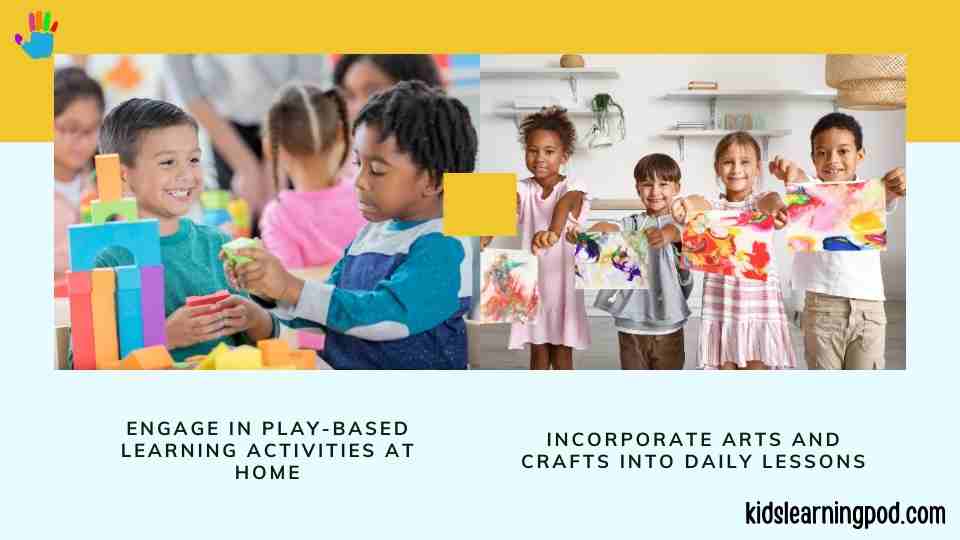
Similarly, if your child thrives on hands-on learning experiences, you can integrate more sensory-based activities, experiments, and projects into their daily routine. By adapting the curriculum to match your child’s needs and interests, you create a learning environment that is both stimulating and enjoyable, fostering a lifelong love for learning.
Creating a Homeschooling Schedule
When homeschooling a kindergartener, flexibility is key. While some families thrive on a structured daily schedule, others prefer a more relaxed approach. Find a balance that works for your family, incorporating dedicated learning time alongside plenty of opportunities for exploration and play.
Creating a Homeschooling Schedule
Establishing a homeschooling schedule is crucial for providing structure and consistency to your child’s learning experience while you learn to know how to homeschool a kindergartener. Begin by determining the optimal learning hours based on your child’s natural rhythm and attention span. While some children may thrive with a structured timetable resembling a traditional school day, others may benefit from a more flexible approach that allows for breaks and exploration.
Divide the day into manageable blocks of time for each subject, incorporating short breaks for snacks, movement, and relaxation. Consider alternating between academic subjects, hands-on activities, and outdoor play to keep your child engaged and motivated throughout the day. Remember to remain flexible and adjust the schedule as needed to accommodate your child’s evolving needs and interests.
Balancing Academic and Non-Academic Activities
In homeschooling kindergarteners, striking a balance between academic and non-academic activities is essential for holistic development. While academic subjects like math, language arts, and science are important, it’s equally crucial to incorporate non-academic activities that nurture creativity, social skills, and physical well-being and knowing how to homeschool a kindergartener. Integrate activities such as art, music, physical education, and nature exploration into your child’s daily routine to provide a well-rounded education.
These activities not only stimulate different areas of the brain but also foster creativity, imagination, and self-expression. Additionally, prioritize outdoor playtime and free exploration to promote physical activity, sensory development, and appreciation for the natural world. By finding the right balance between academic and non-academic activities, you create a holistic learning environment that supports your child’s overall growth and development.
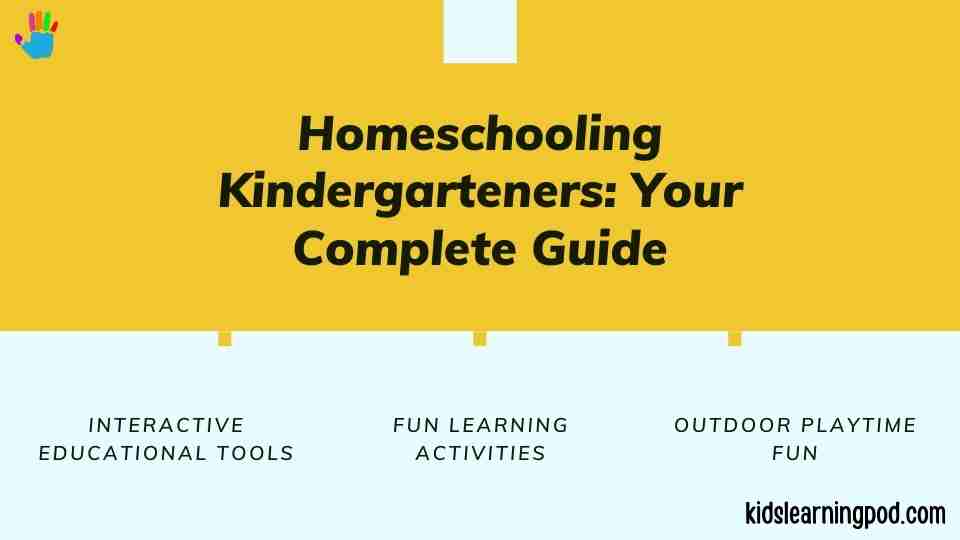
Setting Up a Learning Environment
Designate a specific area in your home for homeschooling activities. This could be a corner of the living room, a spare bedroom, or even a dedicated homeschooling room if space allows. Equip the space with educational materials, books, art supplies, and other resources to create a stimulating environment conducive to know how to homeschool a kindergartener.
Designating a Dedicated Space
Creating a designated learning space in your home is essential for optimizing your child’s homeschooling experience. Choose a quiet, well-lit area that is free from distractions and conducive to focused learning. Whether it’s a corner of the living room, a spare bedroom, or a designated homeschooling room, ensure the space is comfortable and organized and know how to homeschool a kindergartener. Set up a desk or table with ergonomic seating to support your child’s posture and concentration during lessons.
Personalize the space with educational posters, artwork, and learning materials to make it inviting and inspiring. Encourage your child to take ownership of their learning environment by involving them in the design process and allowing them to decorate their space with their favorite books, toys, and learning tools.
Incorporating Educational Tools and Resources
Utilizing a variety of educational tools and resources is key to enriching your child’s homeschooling experience. Stock your homeschooling space with age-appropriate books, manipulatives, puzzles, and educational games that align with your child’s interests and learning objectives. Incorporate technology as a learning tool by providing access to educational websites, interactive apps, and educational videos that reinforce concepts and foster independent learning and knowing how to homeschool a kindergartener.
Explore hands-on learning materials such as math manipulatives, science kits, and art supplies to engage your child’s senses and promote experiential learning. Additionally, leverage community resources such as libraries, museums, and local educational programs to supplement your homeschooling curriculum and provide enriching learning experiences outside the home. By incorporating a diverse range of educational tools and resources, you create a dynamic and stimulating learning environment that inspires curiosity, creativity, and lifelong learning.
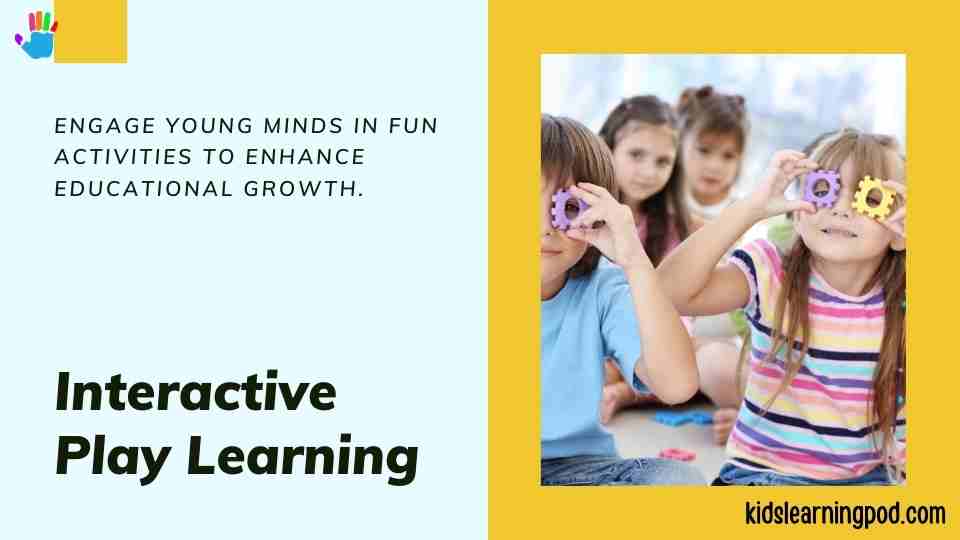
Utilizing Different Teaching Methods
Kindergarteners learn best through hands-on experiences and interactive activities. Incorporate games, puzzles, and sensory play to make learning fun and engaging. Experiment with different teaching methods to keep your child excited about learning and to cater to their individual learning preferences to know how to homeschool a kindergartener.
Hands-on Activities
Integrating hands-on activities into your homeschooling curriculum is a powerful way to engage your kindergartener and deepen their understanding of concepts. Hands-on activities allow children to actively explore, manipulate, and interact with materials, promoting experiential learning and cognitive development. For example, you can use counting bears or blocks to teach math concepts like addition and subtraction, allowing your child to physically group and manipulate objects to solve problems.
Engage your child in science experiments using simple household items to explore scientific principles such as buoyancy, magnetism, and gravity. Additionally, incorporate sensory activities like playdough, sensory bins, or nature exploration to stimulate your child’s senses and encourage creative expression in learning how to homeschool a kindergartener. By providing hands-on learning experiences, you foster a love for learning and empower your child to become active participants in their education.
Interactive Learning Through Games and Play
Harnessing the power of games and play is an effective way to make learning fun and interactive for your kindergartener. Educational games and activities not only reinforce academic concepts but also promote social skills, problem-solving abilities, and critical thinking skills. Incorporate board games, card games, and puzzles that reinforce math, language arts, and critical thinking skills while providing opportunities for social interaction and collaboration.
Use educational apps and online games that are specifically designed to engage young learners and reinforce academic concepts in a playful and interactive way. Additionally, encourage imaginative play by providing props, costumes, and open-ended toys that inspire creativity and storytelling. By integrating games and play into your homeschooling routine, you create a dynamic and engaging learning environment that motivates your child to actively participate and explore the world around them in learning how to homeschool a kindergartener.
Incorporating Socialization Opportunities
While homeschooling, it’s essential to provide opportunities for your child to interact with peers and develop social skills. Arrange playdates with other homeschooling families, join homeschooling co-ops or communities, and participate in group activities such as sports or music classes to ensure your child has ample socialization opportunities.
Playdates and Group Activities
Facilitating playdates and group activities is essential for providing socialization opportunities and fostering interpersonal skills in homeschooling kindergarteners. Arrange playdates with other homeschooling families to allow your child to interact with peers in a relaxed and familiar setting. Encourage cooperative play, sharing, and turn-taking to promote social skills such as communication, empathy, and teamwork.
Organize group activities such as nature walks, picnics, or arts and crafts sessions to provide opportunities for socialization and collaboration with peers and learning how to homeschool a kindergartener. These group interactions not only enhance your child’s social development but also cultivate friendships and a sense of belonging within the homeschooling community.
Joining Homeschooling Co-ops or Communities
Joining homeschooling co-ops or communities is a valuable way to connect with other homeschooling families, share resources, and participate in collaborative learning experiences. Homeschooling co-ops typically consist of groups of families who come together to share teaching responsibilities, organize field trips, and offer extracurricular activities and they discuss how to homeschool a kindergartener.
Joining a co-op allows your child to interact with peers of various ages and backgrounds, fostering a sense of community and belonging. Additionally, homeschooling communities provide support, encouragement, and networking opportunities for parents, allowing them to share ideas, seek advice, and collaborate on educational initiatives. By joining homeschooling co-ops or communities, you enrich your homeschooling experience and create lasting connections with like-minded families who share your educational values and goals in achieving to learn how to homeschool a kindergartener.
Monitoring Progress and Adjusting Strategies
Regularly assess your child’s progress and be prepared to adjust your homeschooling strategies as needed. Keep track of academic milestones and be flexible in adapting your approach to accommodate your child’s changing needs and interests.
Tracking Academic Milestones
Tracking academic milestones is an essential aspect of homeschooling that allows parents to monitor their child’s progress and ensure they are meeting educational goals. Establish clear benchmarks and objectives for each subject area based on your child’s grade level and curriculum standards. Keep detailed records of your child’s achievements, including completed assignments, assessments, and projects.
Regularly assess your child’s knowledge and skills through informal observations, quizzes, and assessments to gauge their understanding of concepts and identify areas for improvement. Celebrate your child’s accomplishments and milestones, providing positive reinforcement and encouragement to motivate continued learning and growth. By tracking academic milestones, you gain valuable insights into your child’s progress and can tailor your homeschooling approach to meet their evolving needs in learning how to homeschool a kindergartener.
Flexibility to Adapt to Child’s Changing Needs
One of the greatest advantages of homeschooling is the flexibility to adapt to your child’s changing needs and learning style. Pay close attention to your child’s interests, strengths, and areas for growth, and be prepared to adjust your homeschooling approach accordingly. If your child demonstrates a strong interest in a particular subject or topic, incorporate more activities and resources related to that area to foster their passion and curiosity.
Similarly, if your child struggles with a certain concept or skill, provide additional support, practice, and alternative teaching methods to help them overcome challenges and build confidence. Embrace a flexible schedule that allows for breaks, exploration, and spontaneous learning opportunities based on your child’s interests and energy levels. By maintaining flexibility and adapting to your child’s changing needs, you create a dynamic and responsive learning environment that maximizes their potential and promotes a lifelong love for learning how to homeschool a kindergartener.
Managing Challenges and Overcoming Obstacles
Homeschooling may come with its challenges, such as maintaining your child’s attention or dealing with resistance to learning. Patience, creativity, and flexibility are essential as you navigate these obstacles and find solutions that work for your child.
Addressing Attention Span Issues
Addressing attention span issues is crucial when homeschooling kindergarteners to ensure productive learning sessions. Keep learning activities short and varied to maintain your child’s interest and engagement while learning how to homeschool a kindergartener. Break lessons into manageable chunks and incorporate movement breaks or hands-on activities to help your child stay focused.
Create a distraction-free learning environment by minimizing noise and visual distractions, and provide clear instructions and expectations for each activity. Use visual aids, timers, or countdowns to help your child understand the passage of time and stay on task. Additionally, consider your child’s natural rhythms and schedule learning activities during times when they are most alert and attentive. By addressing attention span issues proactively, you can optimize your child’s learning experience and promote concentration and focus.
Dealing with Resistance to Learning
Dealing with resistance to learning is a common challenge when homeschooling kindergarteners, but there are strategies you can use to overcome it. First, acknowledge and validate your child’s feelings and concerns about learning, and create a supportive and nurturing environment where they feel safe to express themselves. Offer choices and autonomy whenever possible, allowing your child to have some control over their learning experience how to homeschool a kindergartener.
Incorporate activities and topics that align with your child’s interests and passions to increase their motivation and engagement. Break tasks into smaller, more manageable steps and provide encouragement and positive reinforcement as your child makes progress. If your child is experiencing frustration or boredom, take a break and revisit the activity later with a fresh perspective. Finally, be patient and flexible, adjusting your approach as needed to accommodate your child’s individual learning style and preferences. By addressing resistance to learning with empathy, understanding, and patience, you can help your child overcome obstacles and cultivate a positive attitude towards learning how to homeschool a kindergartener.
Engaging Parents in the Learning Process
Involve parents as partners in their child’s education by providing them with resources, support, and guidance. Keep communication channels open, and encourage parents to actively participate in their child’s learning journey.
Ensuring Emotional and Psychological Well-being
Prioritize your child’s emotional and psychological well-being by fostering a supportive and nurturing learning environment. Address any anxieties or concerns they may have about homeschooling and provide them with the reassurance and encouragement they need to thrive.
Fostering a Positive Learning Environment
Creating a positive learning environment is essential for nurturing a love for learning how to homeschool a kindergartener and supporting your child’s academic and emotional growth. Start by establishing clear expectations and routines that provide structure and consistency for your child. Encourage a growth mindset by praising effort and perseverance rather than focusing solely on outcomes.
Celebrate your child’s successes and accomplishments, no matter how small, to boost their confidence and self-esteem. Foster open communication and a sense of mutual respect, allowing your child to express their thoughts, feelings, and ideas freely. Embrace a supportive and encouraging attitude, providing constructive feedback and guidance to help your child learn and grow. By fostering a positive learning environment, you create a safe, welcoming space where your child feels motivated, empowered, and excited to explore new ideas and concepts.
Addressing Any Anxieties or Concerns
Addressing any anxieties or concerns your child may have about homeschooling is essential for promoting a healthy and positive learning experience about how to homeschool a kindergartener. Start by having open and honest conversations with your child to understand their fears and worries. Listen attentively to their concerns and validate their feelings, offering reassurance and support to help alleviate anxiety.
Provide age-appropriate information about homeschooling and address any misconceptions or misunderstandings your child may have. Involve your child in the decision-making process and collaborate on creating a homeschooling plan that meets their needs and preferences. Establish a support network of friends, family members, or homeschooling groups where your child can connect with peers and find encouragement and camaraderie.
Finally, model a positive attitude towards learning how to homeschool a kindergartener and resilience in the face of challenges, demonstrating to your child that it’s okay to make mistakes and that learning how to homeschool a kindergartener is a journey filled with growth and discovery. By addressing anxieties or concerns with empathy, understanding, and support, you empower your child to embrace homeschooling with confidence and enthusiasm.
Incorporating Enrichment Activities
In addition to core academic subjects, incorporate enrichment activities such as field trips, art projects, and music lessons to provide a well-rounded education for your child. These activities stimulate creativity, foster curiosity, and broaden your child’s horizons beyond the traditional classroom setting.
Field Trips and Educational Outings
Incorporating field trips and educational outings into your homeschooling curriculum provides valuable opportunities for hands-on learning and real-world exploration. Plan visits to museums, science centers, zoos, botanical gardens, historical sites, and other educational venues to supplement classroom learning how to homeschool a kindergartener with immersive experiences.
Encourage your child to engage with exhibits, ask questions, and participate in interactive activities to deepen their understanding of various subjects. Before the trip, involve your child in the planning process by researching the destination together and discussing what they hope to learn and see. During the outing, encourage observation, critical thinking, and reflection, and follow up with discussions or activities to reinforce key concepts. Field trips not only enrich your child’s learning experience but also foster a sense of curiosity, wonder, and appreciation for the world around them.
Art, Music, and Creative Expression
Integrating art, music, and creative expression into your homeschooling curriculum stimulates your child’s imagination, promotes self-expression, and enhances their cognitive and emotional development. Provide opportunities for your child to explore various artistic mediums such as painting, drawing, sculpting, and crafting, allowing them to express their creativity and individuality. Incorporate music appreciation by introducing your child to different genres, composers, and musical instruments through listening, singing, and dancing activities.
Encourage your child to experiment with rhythm, melody, and composition through hands-on music-making experiences. Additionally, foster creative expression through storytelling, role-playing, drama, and imaginative play, encouraging your child to use their imagination and problem-solving skills to create and explore new worlds. By embracing art, music, and creative expression, you inspire your child to think outside the box, express themselves authentically, and cultivate a lifelong appreciation for the arts.

Balancing Screen Time and Technology Use
While technology can be a valuable learning tool, it’s essential to strike a balance and set boundaries for screen time. Limit exposure to screens and encourage hands-on, interactive learning experiences that promote active engagement and critical thinking skills.
Integrating Technology as a Learning Tool
Incorporating technology as a learning tool enhances your homeschooling curriculum by providing access to a wealth of educational resources and interactive learning experiences. Utilize educational websites, apps, and software programs that align with your child’s interests and learning objectives to supplement traditional teaching methods to learn how to homeschool a kindergartener. Introduce interactive multimedia presentations, simulations, and virtual tours to bring abstract concepts to life and engage your child’s senses.
Encourage your child to explore coding, robotics, and digital media creation to develop valuable 21st-century skills such as problem-solving, critical thinking, and digital literacy. Additionally, leverage online learning platforms and educational videos to facilitate self-directed learning and personalized instruction tailored to your child’s pace and preferences. By integrating technology as a learning tool, you empower your child to harness the power of digital resources to expand their knowledge, skills, and creativity in exciting and innovative ways.
Setting Boundaries for Screen Time
While technology can be a valuable learning tool, it’s essential to set boundaries for screen time to ensure a balanced and healthy homeschooling experience. Establish clear rules and expectations regarding when and how technology can be used for educational purposes, and communicate these boundaries with your child. Designate specific times for screen-based activities, such as research, educational videos, or interactive learning games, and limit non-educational screen time accordingly. Encourage breaks from screens to engage in physical activity, creative play, and face-to-face interactions with family members.
Model healthy screen habits by monitoring your own screen time and prioritizing offline activities and quality time with your child. Emphasize the importance of digital citizenship, online safety, and responsible use of technology, and teach your child to be mindful of their screen usage and its impact on their well-being. By setting boundaries for screen time, you create a healthy balance between digital learning how to homeschool a kindergartener and real-world experiences, ensuring that technology enhances rather than detracts from your child’s homeschooling journey.
Seeking Support and Community Resources
Take advantage of online forums, support groups, and community resources available to homeschooling families. These platforms provide opportunities for networking, sharing resources, and seeking advice from experienced homeschoolers.
Online Forums and Support Groups to learn How to Homeschool a Kindergartener!
Engaging with online forums and support groups provides valuable opportunities for homeschooling parents to connect, share resources, and seek advice from a supportive community of peers. Join online forums and social media groups dedicated to homeschooling, where you can interact with other parents, exchange ideas, and troubleshoot challenges together. Participate in discussions, ask questions, and share your experiences to gain insights and perspectives from a diverse range of homeschooling families.
Seek out specialized forums or groups focused on specific educational philosophies, learning styles, or curriculum options that align with your preferences and goals. Additionally, consider joining local or regional homeschooling associations or networks that offer in-person meetings, events, and networking opportunities. By connecting with online forums and support groups, you access a wealth of knowledge, support, and encouragement to enrich your homeschooling journey and build meaningful connections with fellow homeschooling families.
Accessing Educational Materials and Curriculum Guides
Accessing high-quality educational materials and curriculum guides is essential for designing a comprehensive and effective homeschooling curriculum for your child. Explore a variety of resources, including textbooks, workbooks, online courses, and educational websites, to find materials that align with your child’s grade level, interests, and learning how to homeschool a kindergartener objectives. Look for curriculum guides and lesson plans developed by reputable publishers, educational organizations, or experienced homeschooling parents to provide structure and guidance for each subject area.
Consider incorporating a mix of secular and religious materials, as well as diverse perspectives and voices, to provide a well-rounded and inclusive education for your child. Take advantage of free resources available online, such as open educational resources (OER), educational videos, and downloadable worksheets, to supplement your curriculum and provide additional learning how to homeschool a kindergartener opportunities. By accessing a wide range of educational materials and curriculum guides, you can tailor your homeschooling curriculum to meet your child’s individual needs, interests, and learning style, ensuring a rich and engaging educational experience.
Listen to experts!
Conclusion
Homeschooling a kindergartener is a rewarding and enriching experience that allows you to tailor your child’s education to their individual needs and interests. By creating a nurturing learning how to homeschool a kindergartener environment, incorporating hands-on activities, and fostering socialization opportunities, you can lay the foundation for your child’s lifelong love of learning.

